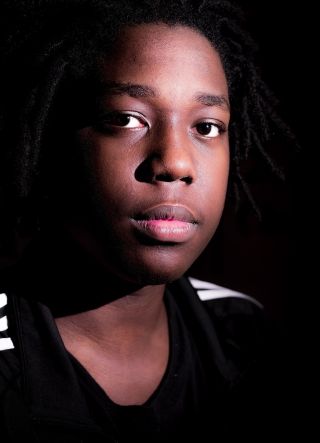ADHD
Who Is Diagnosed With Attention Deficit Disorder?
Boys who are younger than their classmates are most likely to be diagnosed.
Posted December 11, 2023 Reviewed by Monica Vilhauer
Key points
- Children who are young for their class in school are more likely to be diagnosed with ADHD.
- The true problem may be anxiety, depression, or family difficulties.
- Taken for years, ADHD medications can stunt growth and are linked to higher weight.
.jpg?itok=mKzKIyyY)
The news about a shortage of medications for attention deficit disorder (ADHD) has shown just how many parents feel their kids badly need the medication. Lots of teens and adult ADHD patients go into a panic when they can't fill a prescription as well.
But there is still a question about whether some children who are medicated might need a different kind of help—or may simply need to be accepted. One clue is that children are more likely to receive an ADHD diagnosis if they’re younger than their classmates. That's not new news, but research suggests it's still true.
As children get older, they typically calm down and become more able to focus at a desk. So comparing older kids to younger ones could easily make the young ones look unfocused. Being among the youngest in your class increases your chance of being diagnosed with ADHD by about 27 percent in countries that diagnose the illness more often, including the United States, according to a 2019 meta-analysis. Often, the first referral to doctors for these younger students comes from a teacher, not a parent, a 2022 study of 17 elementary schools concluded, which suggested that teachers may misread these students.
It’s also possible that kids who are the oldest in the class and suffer from ADHD aren’t being identified because they look calm compared to their younger classmates, but that idea wasn't covered in these studies.
The trend towards diagnosing (and possibly misdiagnosing) this disorder has slowed down a bit. Close to 10 percent of U.S. school-age children now carry the label, the Centers for Disease Control and Prevention (CDC) reports, down from 11 percent a decade ago, after rising steadily from 2003. Among boys, the figure is 13 percent, compared to 6 percent for girls. However, updated research suggests the numbers may be creeping up again.
Of those children, the CDC reports that about two-thirds take medication and half get counselling to change their behavior, with about a third getting both kinds of help, the recommendation from the American Academy of Pediatrics. With good counselling, people tend to need less medication, observes Michael Manos, head of Cleveland Clinic Children’s ADHD Center for Evaluation and Treatment.
Getting an early diagnosis is a good thing, assuming a child actually needs help, he notes. But parents too often rely on pediatricians. “The time that a pediatrician can spend with a family is going to be maybe 15 to 30 minutes. When we do a diagnosis here in our offices, we spend a minimum of 90 minutes,” he explains.
A new development: artificial intelligence programs analyzing brain images and records of activity have had success with diagnosis. Video games can also be designed as diagnostic tools. These tech solutions could act as early screens.
Ideally, they might help correct for the biases of frustrated parents and teachers.

Take the case of one 12-year-old boy who came to Teachers College Dean-Hope Center for Educational and Psychological Services to be evaluated for learning problems. His parents believed he had ADHD; his grades were mostly Bs and they thought he was smart enough to earn As. The Teachers College team noted that he was able to pay attention for two-hour sessions of testing. Also, he was doing well in some areas, which meant he could focus when he chose. Their bottom line: He didn’t have ADHD.
Teachers College professor Steve Peverly, PhD, observes that many children are misdiagnosed with academic problems like dyslexia or ADHD, when they actually have other problems causing the behavior that attracted attention. Sometimes they are distracted by family problems like fights in the home. A child may suffer from anxiety or depression or be reacting against being punished severely at home, Manos notes. Children from poorer families are more likely to get this label.
At least some of them are not getting a fair shake. An old (2010) but large American study documenting the young-for-class problem, found that among children who were the youngest in their kindergarten class, 8.4 percent had been diagnosed with ADHD, compared to 5.1 percent of the oldest children in their grades. The study drew on data from nearly 12,000 children from government surveys of parents and teachers of kindergarteners, in the fall of the 1998–1999 school year, who were contacted again several times through eighth grade. The author, an economist, observed that if birth date was irrelevant, 20 percent of the children identified as having ADHD had been misdiagnosed and may be taking medication unnecessarily.
ADHD medications are stimulants with side-effects: They raise pulse rates and blood pressures and can stunt growth. A long-running study with a large international team of researchers concluded in 2019 that children who took medication continuously for 16 years ended up 1.3 inches shorter and 16 pounds heavier as adults in their 20s.
Parents need to understand this risk, especially since some research indicates that the benefits of the medications wear off. This can happen as soon as two years, a small 2022 experiment found.
Many parents of children with ADHD, and children and adults with ADHD, say their medication is invaluable and are in a panic when it's not available. But if you or your child's symptoms were mild, this might be a time to reevaluate whether it was ever needed.




